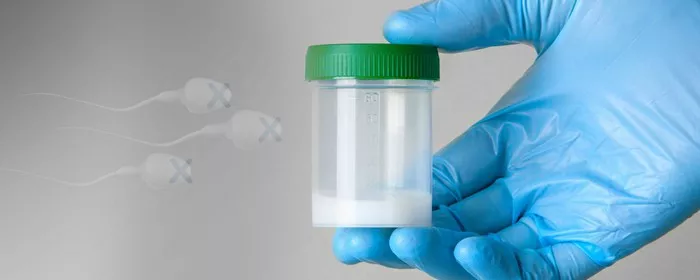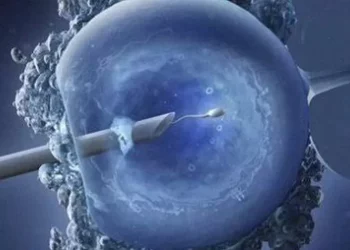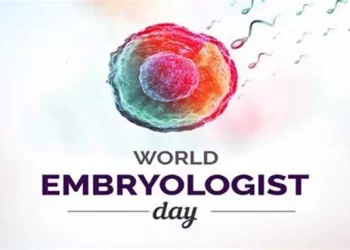Infertility affects millions of couples worldwide, with male factor infertility contributing to nearly half of all cases. Among the various conditions leading to male infertility, hypospermatogenesis stands out as a significant factor. In this article, we will explore the intricacies of hypospermatogenesis, from its definition and understanding of spermatogenesis to its causes, diagnosis, treatment options, prognosis, and outlook.
Introduction to Hypospermatogenesis
Hypospermatogenesis is a condition characterized by the inadequate production of sperm cells within the testes. This impairment in sperm production can significantly impact male fertility, making it difficult for couples to conceive naturally. While some sperm may still be produced, their quantity and quality are often insufficient for successful fertilization.
Understanding the significance of hypospermatogenesis is paramount in addressing male infertility. Sperm cells are crucial for the fertilization of female eggs, and any disruption in their production can hinder the reproductive process. Therefore, identifying and addressing the underlying causes of hypospermatogenesis are essential steps in managing male infertility.
Understanding Spermatogenesis
Spermatogenesis is the complex process through which sperm cells are produced in the testes. This intricate process involves several stages, beginning with the division of spermatogonia (precursor cells) and culminating in the formation of mature spermatozoa. The process of spermatogenesis occurs within specialized structures called seminiferous tubules, which are found in the testes.
The various stages of spermatogenesis include:
1. Spermatogonial phase: In this phase, spermatogonia undergo mitotic division to produce primary spermatocytes.
2. Meiotic phase: Primary spermatocytes undergo two rounds of meiotic division to form haploid spermatids.
3. Spermiogenesis: Spermatids undergo extensive morphological changes to develop into mature, motile spermatozoa.
Any disruption in these stages can lead to abnormalities in sperm production, including hypospermatogenesis.
Causes of Hypospermatogenesis
Hypospermatogenesis can arise from a variety of factors and conditions, both genetic and environmental. Some of the common causes include:
1. Genetic factors: Inherited genetic mutations or abnormalities can interfere with normal spermatogenesis, leading to hypospermatogenesis.
2. Hormonal imbalances: Hormonal disturbances, such as low levels of testosterone or elevated levels of estrogen, can affect sperm production.
3. Environmental factors: Exposure to toxins, pollutants, or radiation can impair spermatogenesis and contribute to hypospermatogenesis.
4. Lifestyle factors: Unhealthy lifestyle habits such as smoking, excessive alcohol consumption, and drug use can negatively impact sperm production.
5. Infections: Certain infections, such as sexually transmitted infections or inflammation of the testes (orchitis), can disrupt spermatogenesis.
6. Testicular trauma: Injury or trauma to the testes can impair sperm production and lead to hypospermatogenesis.
7. Radiation or chemotherapy: Cancer treatments such as radiation therapy or chemotherapy can damage the testes and affect sperm production.
8. Certain medications: Some medications, including chemotherapy drugs, steroids, and certain antihypertensive medications, can interfere with spermatogenesis.
Identifying the specific cause of hypospermatogenesis is crucial for determining the most appropriate treatment approach.
Diagnosis of Hypospermatogenesis
Diagnosing hypospermatogenesis typically involves a comprehensive evaluation of the patient’s medical history, physical examination, and diagnostic tests. Key diagnostic methods include:
1. Semen analysis: Semen analysis is the cornerstone of male infertility evaluation, providing essential information about sperm count, motility, and morphology.
2. Hormone tests: Blood tests may be conducted to assess hormone levels, including testosterone, follicle-stimulating hormone (FSH), and luteinizing hormone (LH).
3. Genetic testing: Genetic testing may be recommended to identify any underlying genetic abnormalities that could contribute to hypospermatogenesis.
4. Imaging studies: Imaging techniques such as ultrasound may be used to evaluate the structure and function of the testes, helping to identify any abnormalities or conditions that could affect sperm production.
A comprehensive diagnostic approach is essential for accurately assessing the extent and underlying causes of hypospermatogenesis.
Treatment Options
Treatment options for hypospermatogenesis aim to address underlying factors, improve sperm production, and enhance fertility. Depending on the specific cause and severity of the condition, treatment options may include:
1. Lifestyle changes: Adopting a healthy lifestyle, including regular exercise, a balanced diet, and avoidance of harmful substances, can improve sperm quality and overall fertility.
2. Hormone therapy: Hormone replacement therapy may be prescribed to correct hormonal imbalances and stimulate sperm production.
3. Surgical interventions: Surgical procedures such as varicocele repair or testicular sperm extraction (TESE) may be recommended to correct anatomical abnormalities or retrieve sperm for assisted reproductive techniques.
4. Assisted reproductive technologies (ART): ART procedures such as in vitro fertilization (IVF) and intracytoplasmic sperm injection (ICSI) offer options for couples with hypospermatogenesis to achieve pregnancy.
5. Experimental treatments: Emerging therapies, including stem cell-based approaches and gene therapy, hold promise for treating hypospermatogenesis, although further research is needed to establish their safety and efficacy.
The choice of treatment depends on individual factors such as the underlying cause of hypospermatogenesis, the patient’s overall health, and the couple’s fertility goals.
Prognosis and Outlook
The prognosis for individuals with hypospermatogenesis varies depending on the severity of the condition and the underlying causes. With appropriate diagnosis and treatment, many couples can achieve successful pregnancy through assisted reproductive techniques. However, in some cases, male infertility may remain a challenge despite treatment efforts.
It’s essential for individuals with hypospermatogenesis to work closely with healthcare providers specializing in male infertility to explore all available treatment options and make informed decisions about their reproductive health.
Conclusion
Hypospermatogenesis is a significant contributor to male infertility, affecting the production of sperm cells and hindering natural conception. Understanding the causes, diagnosis, and treatment options for hypospermatogenesis is essential for couples struggling with infertility. By addressing underlying factors and exploring various treatment modalities, individuals with hypospermatogenesis can improve their chances of achieving successful pregnancy and fulfilling their desire for parenthood.
For additional resources and support, individuals dealing with hypospermatogenesis can seek guidance from reproductive endocrinologists, urologists specializing in male infertility, and infertility support groups.
In conclusion, by advancing our understanding of hypospermatogenesis and its management, we can empower individuals and couples to overcome male infertility challenges and realize their dreams of starting a family.
Related Topics:
The Process of IVF: Step By Step Through An IVF Cycle



























